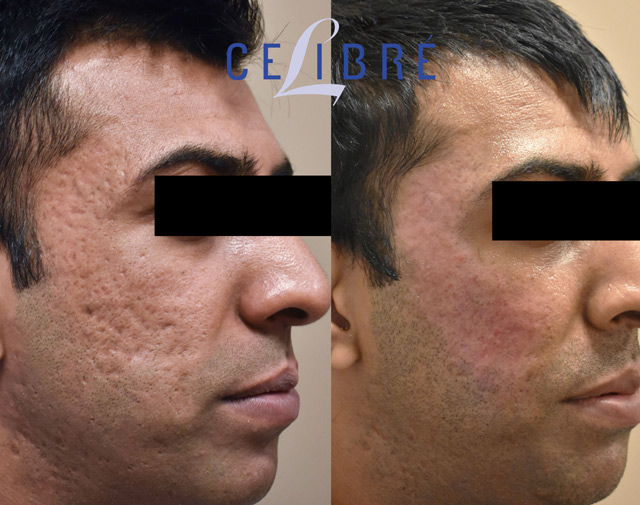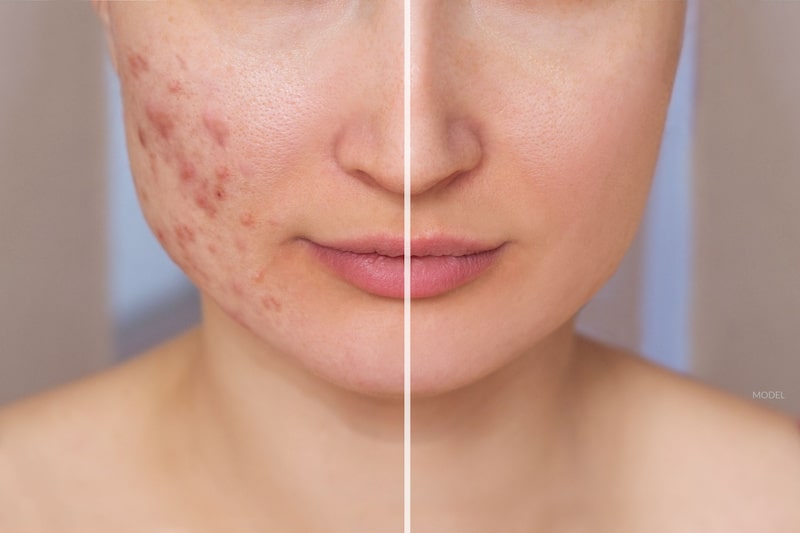Ingenious Acne and Acne Scars Treatment: Solutions for each Skin Type
Ingenious Acne and Acne Scars Treatment: Solutions for each Skin Type
Blog Article
Discovering Skin Problems: Determining and Treating Acne Scars for Healthier Skin
Acne scars stand for a substantial worry for individuals seeking to keep healthy and balanced skin, as they can influence both appearance and self-confidence. Understanding the numerous types of scars, from atrophic to hypertrophic, is important for identifying appropriate therapy choices. While professional treatments like chemical peels and microneedling can be efficient, the importance of individualized care strategies can not be overemphasized. Preventative procedures play an important duty in reducing future scarring. As we discover these elements, one must think about exactly how the appropriate method can bring about transformative results.
Comprehending Acne Marks
Understanding acne marks is crucial for any individual that has experienced serious acne, as these marks can have a long-term influence on both physical appearance and psychological wellness. When the skin goes through inflammatory feedbacks throughout active acne lesions, acne scars form. The extent of scarring is typically affected by elements such as the sort of acne, its period, and individual skin attributes.
The body's all-natural recovery procedure can cause either atrophic marks, which look like clinical depressions in the skin, or hypertrophic marks, which are elevated and arise from overflow of collagen. In addition, the psychological toll of acne marks need to not be undervalued; lots of people report sensations of shame, anxiousness, and reduced self-worth. This psychological problem can impact social communications and general lifestyle.
Resolving acne marks calls for a thorough understanding of their development and effect. Understanding of the capacity for long-lasting repercussions connected with neglected scars can motivate people to look for proper therapies. Early intervention and effective management approaches can dramatically boost skin look and improve mental resilience, stressing the relevance of comprehending the complexities surrounding acne scars.
Kinds Of Acne Marks
Acne scars can be classified into distinct types, each showing special attributes and needing specific therapy methods. The main types of acne marks include atrophic, hypertrophic, and keloid marks.

Hypertrophic scars, on the other hand, are increased over the skin degree and are the outcome of excessive collagen production throughout the recovery procedure. They commonly remain within the limits of the original acne lesion. Keloid marks are similar however prolong past the initial injury website, forming bigger, elevated locations that can be painful or itchy.
Understanding these types of marks is crucial for picking appropriate treatment options. Different scars might react far better to details treatments, such as laser therapies, fillers, or medical treatments, highlighting the value of a customized technique to acne mark administration.
Determining Your Scars
When examining the look of your skin, it is crucial to accurately recognize the kind of marks present, as this will notify the most effective treatment approach. Acne marks typically drop into two categories: atrophic and hypertrophic scars. Atrophic scars, which are the most usual, look like depressions or impressions on the skin. These can better be categorized into ice-pick scars, boxcar marks, and rolling scars, each exhibiting distinct attributes and requiring different strategies for analysis.
Hypertrophic marks, on the other hand, are elevated and happen as a result of extreme collagen production throughout the healing procedure. Recognizing the certain features of your marks-- such as deepness, appearance, and width-- is essential for appropriate recognition. Additionally, take into consideration the distribution of scars across your skin, as this can suggest the extent and duration of the acne condition.
Involving with a skin doctor can offer beneficial insights right into the nature of your marks, aiding in the differentiation in between various image source types. An extensive understanding of your scars will inevitably lead to a more tailored and efficient therapy plan, guaranteeing a clearer and much healthier complexion.
Therapy Alternatives Available
Determining the specific sort of acne scars existing on your skin lays the groundwork for exploring effective therapy options. Typical sorts of acne scars consist of atrophic (clinically depressed), hypertrophic (elevated), and post-inflammatory erythema.
For atrophic marks, alternatives such as chemical peels, microneedling, and laser resurfacing are extensively used. Chemical peels use acids to eliminate the outer layer of skin, promoting new cell development. Microneedling involves tiny needles that create micro-injuries, stimulating collagen production. Laser resurfacing targets damaged skin cells, improving structure and tone.
Hypertrophic marks can be treated with corticosteroid injections to flatten the scar or laser treatment to reduce redness and boost look. acne scars treatment. Silicone gel sheets and stress dressings may also help in handling increased scars
In enhancement, dermal fillers can briefly fill out depressions from atrophic scars, while medical excision may be suitable for severe instances. Each therapy option has its benefits and considerations, making it necessary to seek advice from a dermatologist. They can provide tailored recommendations based upon the kind and intensity of your scars, along with your skin type and overall wellness.
Tips for Prevention
Reliable prevention methods can significantly reduce the likelihood of creating acne scars. Utilizing non-comedogenic items helps stop clogged up pores, which can intensify acne.
Avoiding need to pick or pop acne lesions is important, as this can bring about much deeper skin damage and enhance the threat of scarring. Rather, consider using a chilly compress or non-prescription treatments to lower swelling and soreness.
Sun protection is one more crucial element of avoidance; ultraviolet (UV) rays can darken marks and prevent the recovery procedure. Using a broad-spectrum sun block with a minimum of SPF 30 daily can shield the skin and promote even healing.
Lastly, keeping a balanced diet plan rich in vitamins, minerals, and anti-oxidants sustains skin health and wellness and healing. Staying moisturized and managing anxiety degrees can also play a substantial function in reducing acne flare-ups. By executing these approaches, individuals can dramatically reduce their possibilities of developing acne scars.

Final Thought
In final thought, understanding and determining acne scars is essential content for reliable therapy and attaining much healthier skin. Different types of acne marks, consisting of atrophic and hypertrophic scars, demand certain interventions tailored to specific requirements.
The body's natural recovery procedure can result in either atrophic scars, which show up as depressions in the skin, or hypertrophic scars, which are elevated and result from overproduction of collagen. They are further separated into 3 subtypes: ice choice scars, boxcar marks, and rolling marks. Acne scars generally drop right into two additional resources groups: hypertrophic and atrophic marks. These can additionally be classified right into ice-pick scars, boxcar marks, and rolling scars, each displaying distinct features and requiring various techniques for assessment.
Different types of acne scars, including atrophic and hypertrophic marks, necessitate certain interventions customized to individual requirements.
Report this page